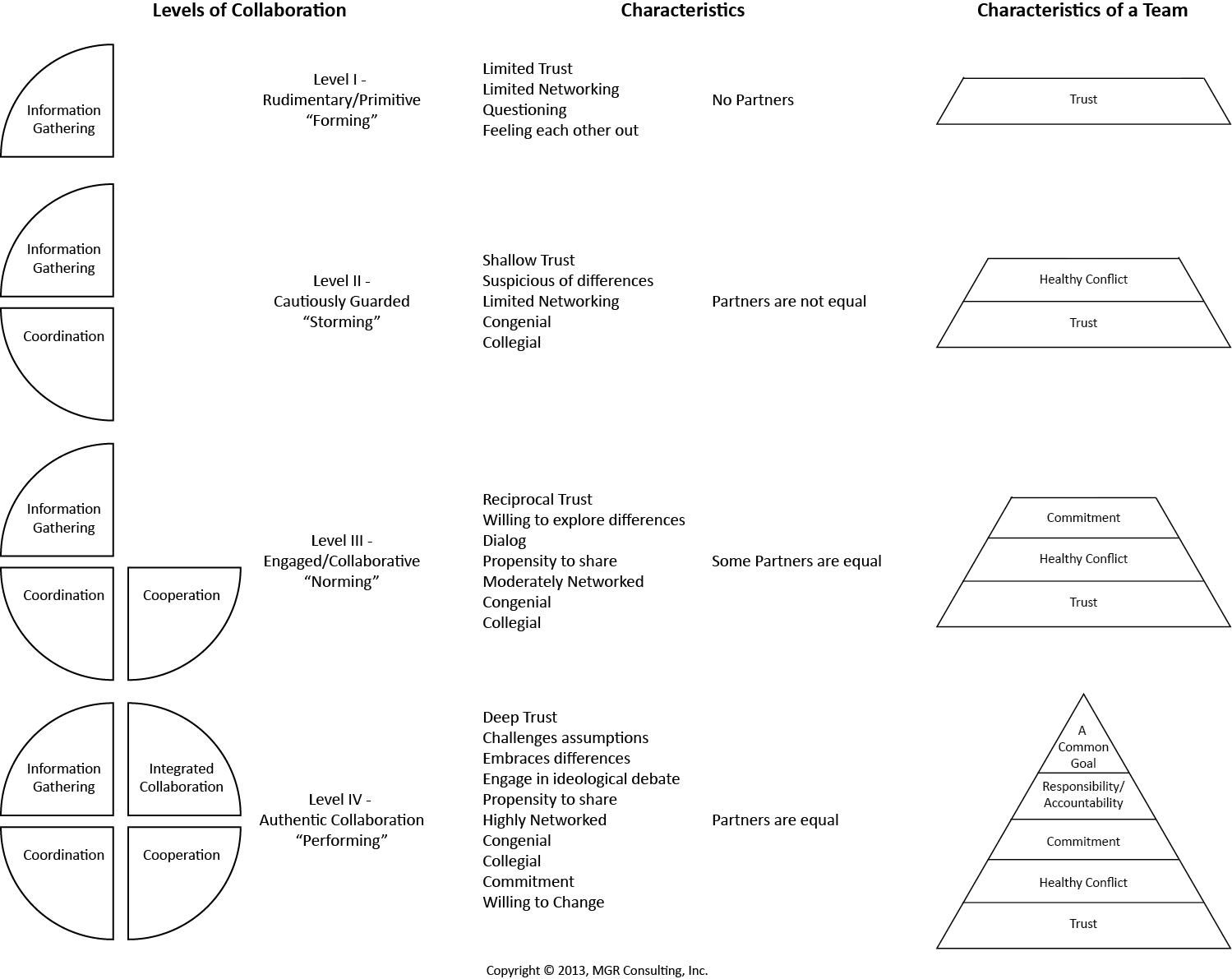December 2013 - The FoCuSeD™ Facilitator eNewsletter

Achieving Authentic Collaboration | Gary Rush Facilitation
“Collaboration” is an outstanding goal. It is a significant trend for the 21st Century. But, what is “collaboration”? The word is used so often that it risks being over-used. Is collaboration simply working together or is it more than that? Let’s start by defining collaboration and taking it further.
What is Collaboration?
Merriam-Webster defines Collaboration as:
- Working jointly with others or together especially in an intellectual endeavor.
The definition is a good starting point, however, it raises some questions:
- Do the people have to get along?
- Does it always have to be intellectual?
- What if those involved just did what they were told?
- Does it have to add value?
Let’s look at how I recognize Collaboration. I recognize Collaboration when…
- People are contributing to create a new whole that’s greater than the sum of the parts.
- People are willing to adjust some of their ideas to better fit the whole.
- It incorporates cooperation.
- Members set aside parochial views to support a greater whole.
Does it have to add value?
When discussing Collaboration, it often centers on whether value is required. If people cooperate and get along but do nothing of value, is that Collaboration? When I asked a group of facilitators, the consensus answer was, “We think added value is required.” Let’s look at Collaboration as levels. Groups achieve a level of Collaboration depending on their overall characteristics (see illustration on the following page). Groups collaborate at a Rudimentary/Primitive level (Level I – “Forming”) when they begin to gather information – they begin to develop a level of trust. They collaborate at a Cautiously Guarded level (Level II – “Storming”) when they begin to coordinate and have developed a level of trust – they begin to engage in healthy conflict. They collaborate at an Engaged/Collaborative level (Level III – “Norming”) when they trust each other, engage in healthy conflict - they begin to make commitments and cooperate. They collaborate at an Authentic Collaboration level (Level IV – “Performing”) when they have developed trust, healthy conflict, commitment – they hold each other accountable and aim for a common goal – i.e., all five (5) Characteristics of a Team – collaboration is fully integrated.
Authentic Collaboration
Recognizing the different levels is important when facilitating or leading groups towards Authentic Collaboration. Authentic Collaboration is then defined as, “Working jointly with others or together in a committed manner, as equals, to achieve a quality outcome.” A Facilitator or Collaborative Leader is required when groups first form, but becomes less important as groups reach higher levels of collaboration. The role of the Facilitator or Collaborative Leader is to recognize in which level a group exists and use people skills and process skills to help guide them towards Level IV – Authentic Collaboration.
Taking this further, it is important to understand that a group does not collaborate without a reason – they collaborate to accomplish something. This means that people skills (forming the group into a team) and process skills (process to accomplish something) need to work hand-in-hand – holistically.
Note: In an article by the RAND Corporation entitled, The Group Matters: A Review of Processes and Outcomes in Intelligence Analysis, by Susan Straus, Andrew Parker, and James Bruce, Group Dynamics: Theory, Research, and Practice, 2011, Vol. 14, No. 2, pp. 128-146, they state that “greater collaboration among analysts is an explicit goal of the Director of National Intelligence…” When researching collaboration, they found that a neutral Facilitator was required to enable effective collaboration and address group problems, such as groupthink and lack of productivity, i.e., enable Authentic Collaboration.
My thoughts:
- Groups need to recognize it’s a goal at some time – on their own.
- Groups need to find where they’re going so that they drive collaboration.
- Authentic Collaboration doesn’t happen every time, but the beginning of collaboration does.
- People don’t have to like each other to collaborate. People do require some level of Trust.
Conclusion
Collaboration is an outstanding goal. Authentic Collaboration is even more effective. As Facilitators and Collaborative Leaders, our goal should be to help groups reach Authentic Collaboration. ![]()
Illustration
The illustration, below, shows the Levels of Collaboration along with identifying characteristics and how they tie to Bruce Tuckman’s model of Group Evolution (Forming, Storming, Norming, and Performing) and Patrick Leccioni’s Characteristics of a Team (Trust, Healthy Conflict, Commitment, Responsibility/Accountability, and A Common Goal).
